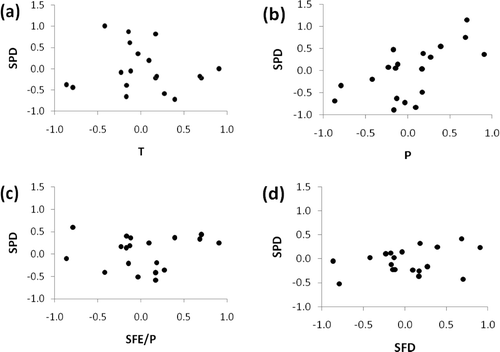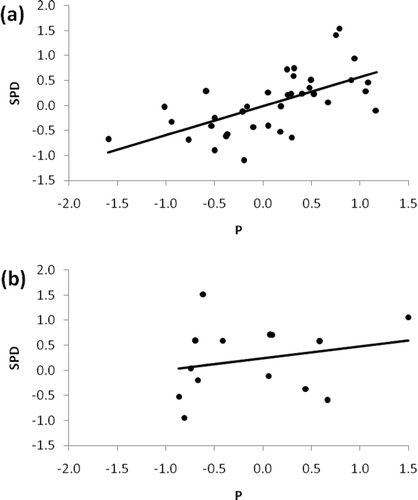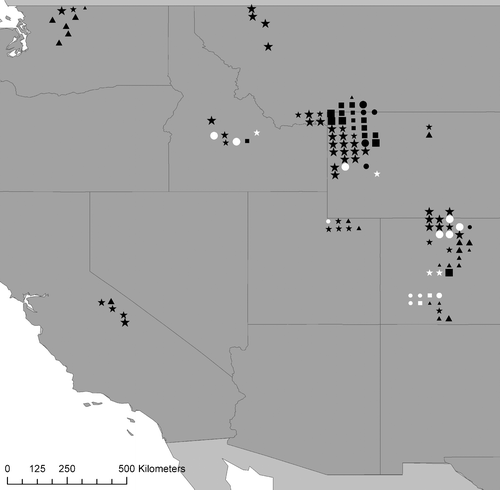Figures & data
FIGURE 1 Snow courses (shaded dots indicating average April 1 SPD in kg m−3) and COOP sites (white circle with center dot) with 15 or more years of quality-controlled data. All COOP sites shown here are within 50 m of elevation and 0.5° latitude and longitude of a snow course. All sites depicted were used in the composite analysis described in the methods section.

TABLE 1 Descriptions of all variables used for regression analyses. The variable acronyms are used throughout the text.
FIGURE 2 The 24 snow courses (dots; darker shading corresponds to higher R 2) used for individual regression analysis. The COOP sites (circled dots; larger circles equal higher average SFE/P) represent the location of the COOP sites with the most years of data in common with the adjacent snow course. The winter season variable (see for acronym descriptions) that explained the most variance in April 1 SPD from simple linear regression is displayed next to each snow course (followed by other significant variables (p < 0.10) that remained in the stepwise regression model). Predictors significant with 95% confidence are in larger font. The R 2 values are with respect to the first step of stepwise regression. The direction of linear relationship is indicated (+ = positive, − = negative), and locations with regression results from transformed data are indicated in .

TABLE 2 The 24 snow course sites (bold) and the nearby COOP sites used in the individual regression analysis. Individual groupings of adjacent sites are delineated by row shading. Snow courses where error normality and constant error-variance issues were successfully alleviated by Box-Cox transformations are indicated by *. Snow courses for which Box-Cox transformations proved unsuccessful at alleviating these issues are indicated by **. OR—Oregon, ID—Idaho, MT—Montana, WY—Wyoming, CO—Colorado.
FIGURE 3 Scatter plots of the standardized composite April 1 SPD (snowpack density) versus Nov–Mar. (a) T (mean air temperature), (b) P (total precipitation), (c) SFE/P (fraction of precipitation fall as snow), and (d) SFD (mean snowfall density). See for a more detailed explanation of these variables. Each observation represents the average over the station network () for a given year.

FIGURE 4 Scatter plots and simple linear regression fits (black line) of the standardized composite April 1 SPD versus Nov–Mar P for (a) stations with average SFE/P > 0.75 and (b) stations with average SFE/P < 0.75. Each observation represents the average over the station network for a given year.

FIGURE 5 The most significant single predictors of April 1 SPD as determined from the CitationBrown et al. (2003) simple snowpack model for NARR grids that had no less than 27 (out of 30; 1980–2009) non-zero April 1 snow depths. Positive (negative) slopes are indicated by black (white) symbols. The largest symbols indicate that the predictor is significant at the 0.05 level, medium symbols indicate that the predictor is significant at the 0.10 level, and the smallest symbols indicate that the predictor is not significant at the 0.10 level. P is represented by stars, T by circles, SFE/P by triangles, and SFD by squares. Predictor variable acronyms are described in .
